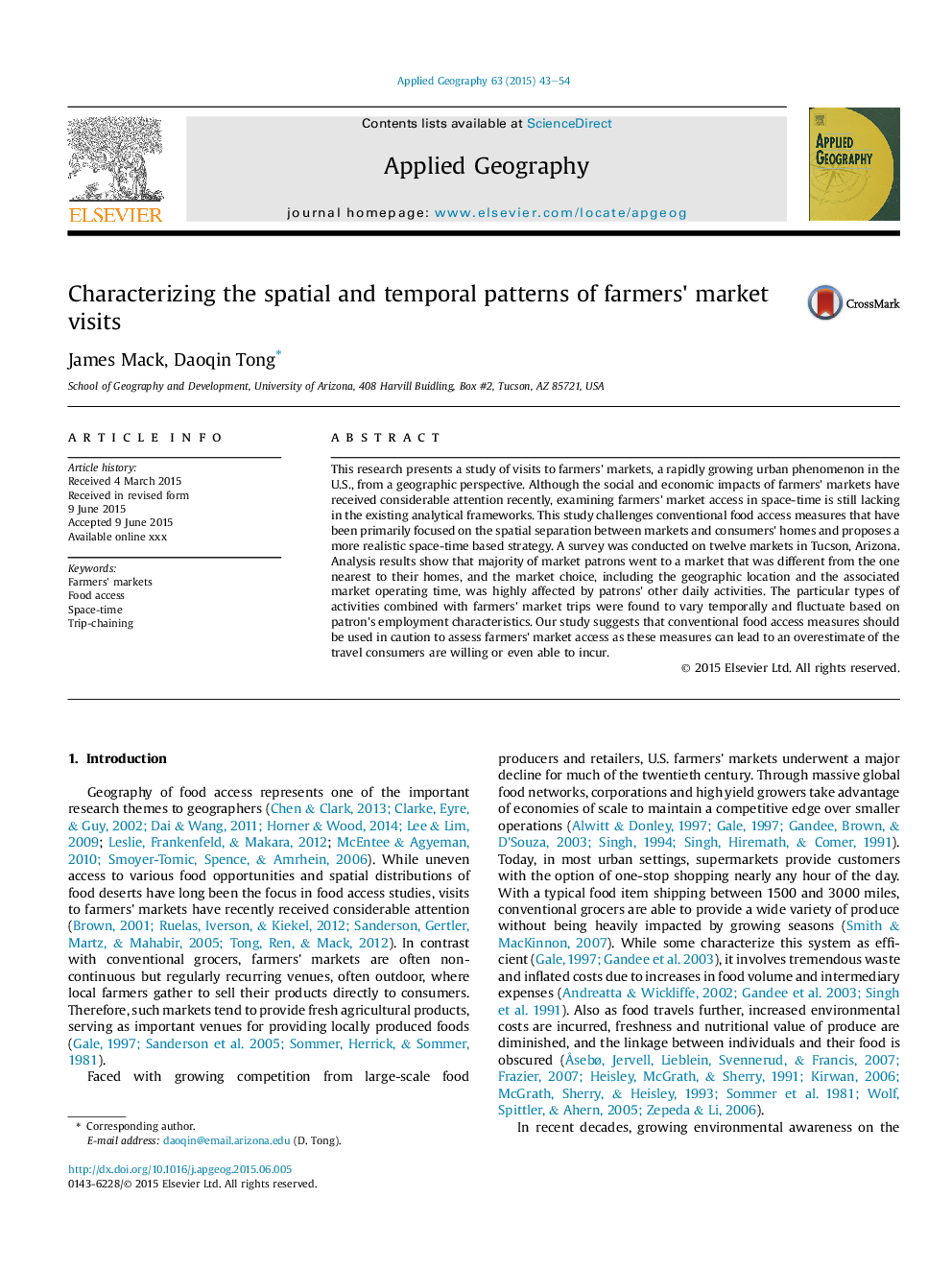| Article ID | Journal | Published Year | Pages | File Type |
|---|---|---|---|---|
| 6538434 | Applied Geography | 2015 | 12 Pages |
Abstract
This research presents a study of visits to farmers' markets, a rapidly growing urban phenomenon in the U.S., from a geographic perspective. Although the social and economic impacts of farmers' markets have received considerable attention recently, examining farmers' market access in space-time is still lacking in the existing analytical frameworks. This study challenges conventional food access measures that have been primarily focused on the spatial separation between markets and consumers' homes and proposes a more realistic space-time based strategy. A survey was conducted on twelve markets in Tucson, Arizona. Analysis results show that majority of market patrons went to a market that was different from the one nearest to their homes, and the market choice, including the geographic location and the associated market operating time, was highly affected by patrons' other daily activities. The particular types of activities combined with farmers' market trips were found to vary temporally and fluctuate based on patron's employment characteristics. Our study suggests that conventional food access measures should be used in caution to assess farmers' market access as these measures can lead to an overestimate of the travel consumers are willing or even able to incur.
Related Topics
Life Sciences
Agricultural and Biological Sciences
Forestry
Authors
James Mack, Daoqin Tong,
